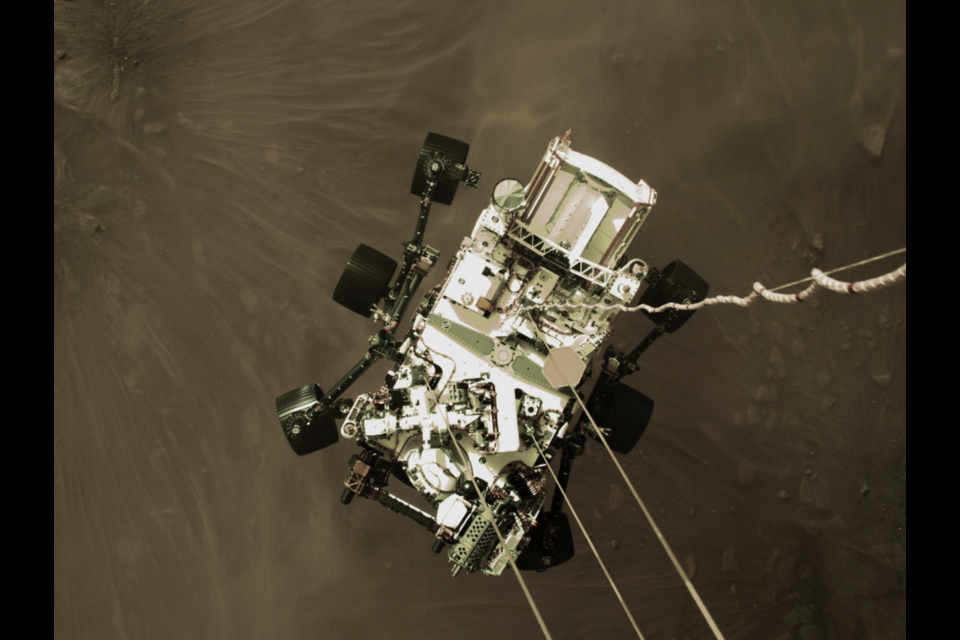Millions around the world were able to catch a glimpse last week of what it’s like to land on an alien planet – and it wouldn’t have been possible without a Richmond company.
Six compact cameras, designed by FLIR Systems, captured the entry, descent and landing of the Perseverance rover, creating dramatic footage that NASA said is the first of its kind – including images of the parachute deploying, the heat shield separating over the desert-like red landscape and Martian dust swirling as Perseverance touched down.
Sadiq Panjwani, vice president with FLIR Systems Components Business, said NASA approached the company over five years ago because of their expertise in creating durable, industrial cameras.
“We did not make a specific camera for NASA’s use – NASA was always looking to get an off-the-shelf commercial camera that works 24/7 in industrial environments,” said Panjwani.
However, while the company’s cameras are designed to withstand some of the toughest conditions on earth, it wasn’t known how they would perform in space.
“We never had the opportunity to test our cameras in scenarios with no gravity or temperature near absolute zero. So we were thrilled to see NASA put them to the test,” Panjwani said.
Five of the cameras had a resolution of 1.2 megapixels and one of 3.2 megapixels – a much lower resolution than what’s available on most cellphones. But these “machine vision” cameras, said Panjwani, are designed to gather information – such as the opening of the parachute and any issues that the rover may encounter during the descent and landing.
“(NASA) wanted a camera that has a very high speed, and that has the ability to capture information in a way that when they slow down the feed, they are still able to find good information about how the landing occurred, how the overall environment was and how the Perseverance made it onto the ground.”
NASA calls the entry and landing event “seven minutes of terror,” as the rover has to handle the descent alone, without any human guidance. It takes more than 11 minutes for a radio signal to travel back from Mars, meaning the rover has already landed by the time the mission team hears it has entered the planet’s atmosphere.
Pajwani watched the landing live and said while the team was nervous, they were “filled with joy and on cloud nine.”
“We are really thrilled to be part of this journey…We saw history in the making.”
Now that it’s safely landed, the Perseverance’s mission is to seek signs of ancient microbial life and collect rock and soil samples that can be returned to Earth.
While FLIR provided six cameras, only four were used during the descent and landing. The remaining two cameras are attached to the rover, but Pajwani said the company has “yet to learn from NASA how they plan to use those cameras in the future.”



